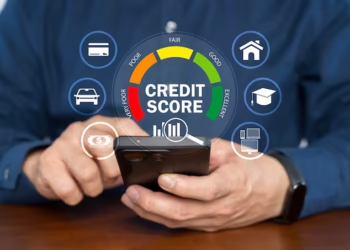Understanding Bad Credit Loans
When money’s tight and your credit score’s in the dumps, getting a loan from a bank can feel like trying to win the lottery. But don’t sweat it—bad credit loans are here to save the day. Let’s break down what these loans are all about and how they stack up against the usual bank loans.
What Are Bad Credit Loans?
Bad credit loans are like a lifeline for folks with not-so-great credit scores or a bumpy financial past. These loans give people a shot at getting the cash they need, even when banks slam the door in their face.
You can find bad credit loans in different flavors: personal loans, payday loans, and debt consolidation loans. Each type has its own rules and reasons for existing. If you want the full scoop on personal loans, check out our article on personal loans.
How Bad Credit Loans Differ from Traditional Loans
The big difference between bad credit loans and the ones you get from a bank is how the lender sizes you up. Banks love their credit scores and spotless payment histories. They want to see a track record of you paying your bills on time and keeping your debt low.
Bad credit lenders, on the other hand, aren’t as picky about your credit score. They look at other stuff like your income, job stability, and how much debt you’re juggling. They get that life happens—maybe you lost your job or had some unexpected bills. By looking at the bigger picture, these lenders can help out folks who wouldn’t stand a chance with a traditional loan.
Sure, bad credit loans might come with higher interest rates and fees, but they also give you a shot at fixing your credit. Pay them back on time, and you could see your credit score climb, opening up better borrowing options down the road.
Knowing the ins and outs of bad credit loans and how they differ from traditional loans is key when you’re weighing your options. Next up, we’ll dive into the different types of bad credit loans you can get, what affects your chances of approval, and how to boost your eligibility.
Types of Bad Credit Loans
So, you’ve got bad credit and need a loan? No worries, you’ve got options. Mainly, there are two flavors: secured and unsecured bad credit loans. Each has its quirks, so let’s break it down.
Secured Bad Credit Loans
Secured bad credit loans need you to put up some collateral—think your car, house, or savings account. This makes the lender feel all warm and fuzzy inside because they have something to grab if you don’t pay up. Because of this security blanket, you might score a bigger loan and a better interest rate.
One cool thing about secured loans is they can help you rebuild your credit. Pay on time, and you’re showing lenders you’re responsible, which can bump up your credit score.
But, and it’s a big but, if you miss payments, the lender can take your collateral. So, before you jump in, make sure you can handle the payments.
Unsecured Bad Credit Loans
Unsecured bad credit loans are the opposite. No collateral needed. These loans are based on your creditworthiness and your ability to repay. Since there’s no safety net for the lender, expect higher interest rates and tougher approval criteria.
The upside? Your assets are safe. If you default, the lender can’t take your stuff. But, your credit score will take a hit, and that’s no fun.
Unsecured loans are good if you don’t have collateral or don’t want to risk losing your assets. Just make sure you read the fine print, check the interest rates, and know the repayment terms.
Understanding the difference between secured and unsecured bad credit loans helps you pick the right one for your situation. And hey, don’t forget to check out other loan types like student loans, payday loans, personal loans, or debt consolidation loans. One of these might be a better fit for you.
Qualifying for Bad Credit Loans
Getting a loan with bad credit can feel like climbing a mountain, but it’s not impossible. There are a few key things that lenders look at, and some steps you can take to boost your chances.
What Lenders Look At
Lenders have a checklist when deciding if they’ll give you a loan. Here’s what they usually consider:
- Credit Score: This is your financial report card. A low score can make things tricky, but some lenders specialize in helping folks with bad credit.
- Income and Job History: Lenders want to see that you have a steady income and a stable job. This shows them you can pay back the loan.
- Debt-to-Income Ratio: This is the percentage of your income that goes toward paying off debts. A lower ratio is better because it shows you can handle more debt.
- Collateral: For secured loans, you might need to offer something valuable, like a car or house, as a backup. This makes lenders feel safer about giving you money.
Knowing these factors can help you figure out where you stand and what you might need to work on.
How to Improve Your Chances
Even with bad credit, there are ways to make yourself a more attractive borrower:
- Check Your Credit Report: Get a copy of your credit report and look for mistakes. If you find any, get them fixed. This can help bump up your score.
- Pay Bills on Time: This one’s a no-brainer. Paying your bills on time can slowly but surely improve your credit score. Set up automatic payments or reminders to help you stay on track.
- Cut Down on Debt: Lowering your debt can improve your debt-to-income ratio. Make a budget, cut out unnecessary expenses, and focus on paying off what you owe.
- Build Credit History: If you don’t have much credit history, consider getting a secured credit card or becoming an authorized user on someone else’s card. Make sure to pay on time to build a good track record.
- Get a Co-Signer: If you’re struggling to get a loan on your own, a co-signer with good credit can help. Just remember, if you don’t pay, they’re on the hook.
By following these steps, you can improve your creditworthiness and make it more likely that you’ll get approved for a loan.
Shop Around
Don’t just go with the first lender you find. Different loans, like student loans, payday loans, personal loans, or debt consolidation loans, have different terms and requirements. Do your homework to find the best deal for you.
Remember, getting a loan with bad credit isn’t easy, but it’s doable. Take the time to understand what lenders are looking for and make the necessary changes to improve your chances. Good luck!
Picking the Right Bad Credit Loan
So, you’re on the hunt for a bad credit loan? It’s like shopping for a car—there are lots of options, and you want to make sure you drive off with the best deal. Here’s what you need to keep an eye on: interest rates and fees, repayment terms, and borrower protections.
Interest Rates and Fees
Interest rates and fees are the price tags on your loan. If your credit score isn’t great, lenders might see you as a bit of a gamble, which means higher interest rates. But don’t just settle for the first offer you get. Shop around. Compare rates from different lenders to find the best deal.
And it’s not just about the interest. Watch out for fees, too. Origination fees, late payment fees, prepayment penalties—they can all add up. Knowing these costs upfront will help you figure out the real price of the loan.
Repayment Terms and Options
Next up, let’s talk about how you’re going to pay this loan back. The repayment period is key. A longer term might mean smaller monthly payments, but you’ll end up paying more in interest over time. Shorter terms can save you money in the long run but might squeeze your monthly budget.
Also, check out the repayment options. Some lenders offer bi-weekly payments, which can help you pay off the loan faster. Others might let you set up automatic payments, so you don’t have to worry about missing a due date. Pick a plan that fits your lifestyle and budget.
Borrower Protections and Regulations
Finally, make sure the lender plays by the rules. They should follow regulations that protect you, the borrower. Do a little homework—look up the lender’s reputation and see if there are any red flags like complaints or bad reviews.
Make sure you understand the loan terms and conditions. Know your rights and ensure the lender sticks to them. If something doesn’t make sense, ask questions. And if you’re still unsure, get advice from a financial pro.
By keeping an eye on interest rates and fees, repayment terms, and borrower protections, you’ll be in a better position to pick the right bad credit loan. Don’t forget to compare multiple lenders and consider other options like student loans, payday loans, or personal loans. And if you’re dealing with multiple debts, a debt consolidation loan might be worth a look. Taking the time to weigh your options can help you find a loan that fits your needs and sets you on the path to better financial health.










